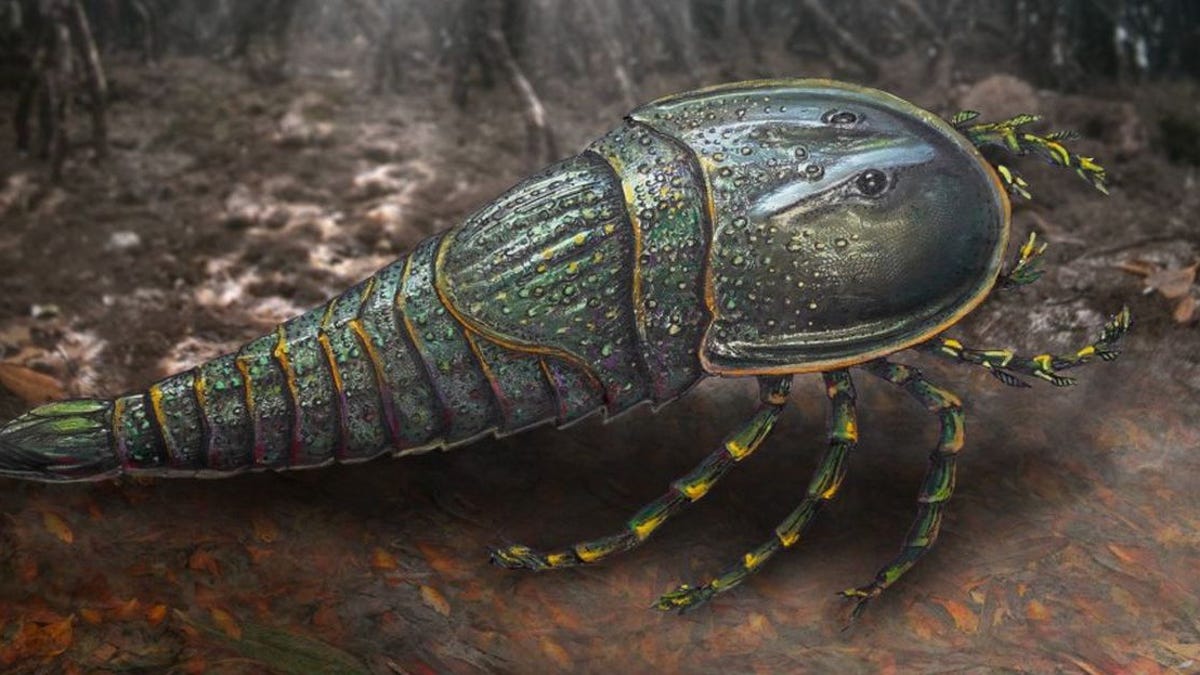'Massive Monster' Sea Scorpion Revealed Through Fossil Discovery
On second thought, let's not build that time machine that takes us back to when sea scorpions lived.
Sea scorpions don't exist anymore, a fact you might be grateful to learn since land scorpions don't have a friendly reputation. Researchers investigated a fossil that had been kicking around for years at the Queensland Museum in Australia and found it belongs to an intimidating group of predators that are long extinct.
In a statement on Friday, the museum described the sea scorpion as a "massive monster" that likely topped 3 feet (1 meter) in length. It lived in lakes or rivers around what is now the Australian town of Theodore. It's the first sea scorpion fossil to be identified in Queensland.
We've met some other sea scorpion fossils before, notably a dog-sized species discovered near China. Sea scorpions are more formally known as eurypterids. The new one is now called Woodwardopterus freemanorum.
The Woodwardopterus freemanorum fossil and an illustration of the fossil.
The fossil was originally discovered in the 1990s and first examined by the museum in 2013. COVID lockdowns gave Andrew Rozefelds, Queensland Museum's geosciences principal curator, a chance to revisit the as-yet-unidentified "cold case" creature.
"When the fragmentary specimen came into our collection, it was initially placed in the 'too-hard basket' but the closures provided the opportunity to study and reassess some of our fossil collection and this particular fossil had always intrigued me," Rozefelds said. Rozefelds is co-author of a paper on the sea scorpion published in the journal Historical Biology.
Rozefelds and lead author Markus Poschmann, a eurypterid expert, dated the fossil to 252 million years ago. This was around the time sea scorpions disappeared, making Woodwardopterus freemanorum one of the last known of its kind. "This new tantalizing fossil helps fill the gap in our knowledge of this group of animals in Australia, and indeed world-wide," Rozefelds said.
Sea scorpions are relatives of modern scorpions and other arachnids. The one found in Theodore would have been a top predator in its day, but that's not something we modern humans have to worry about tangling with. Whew.


